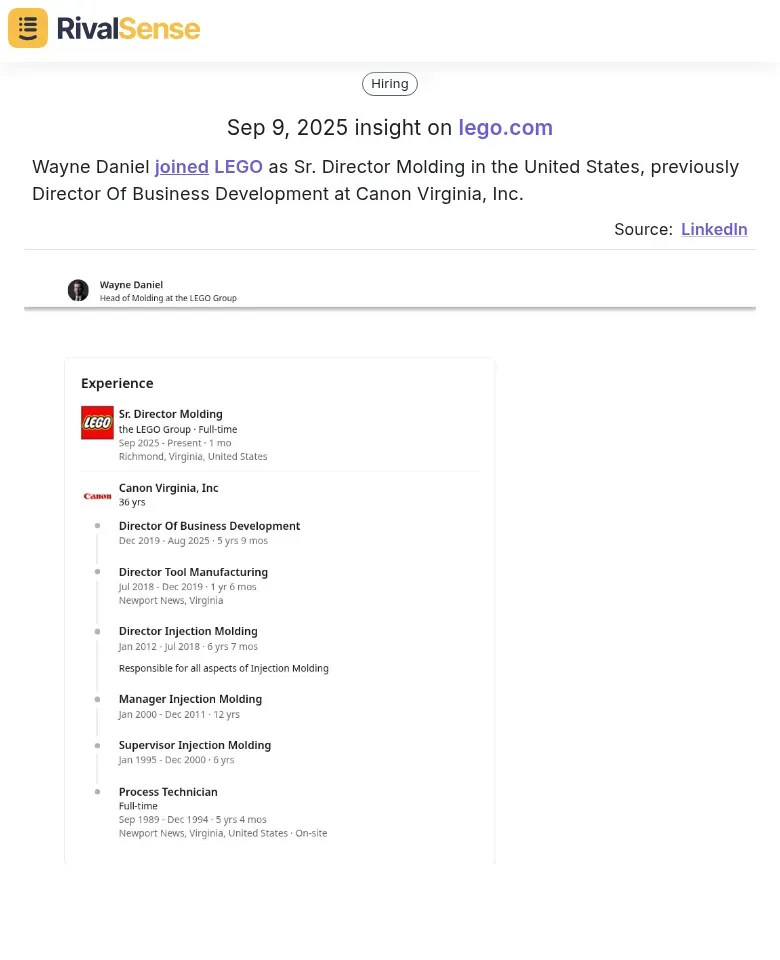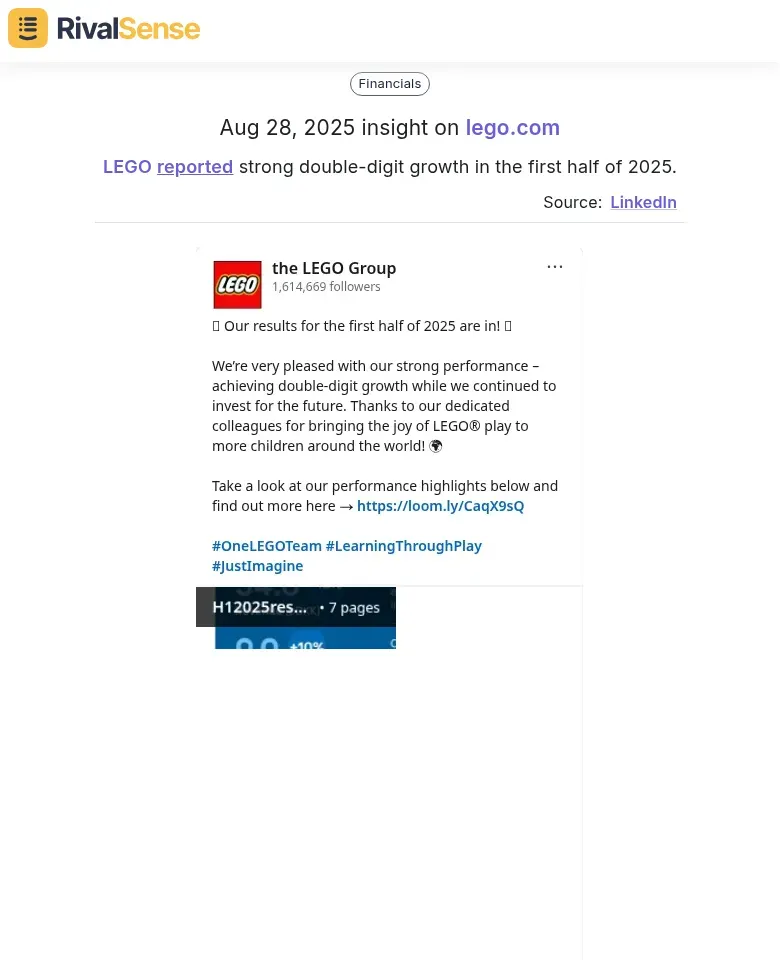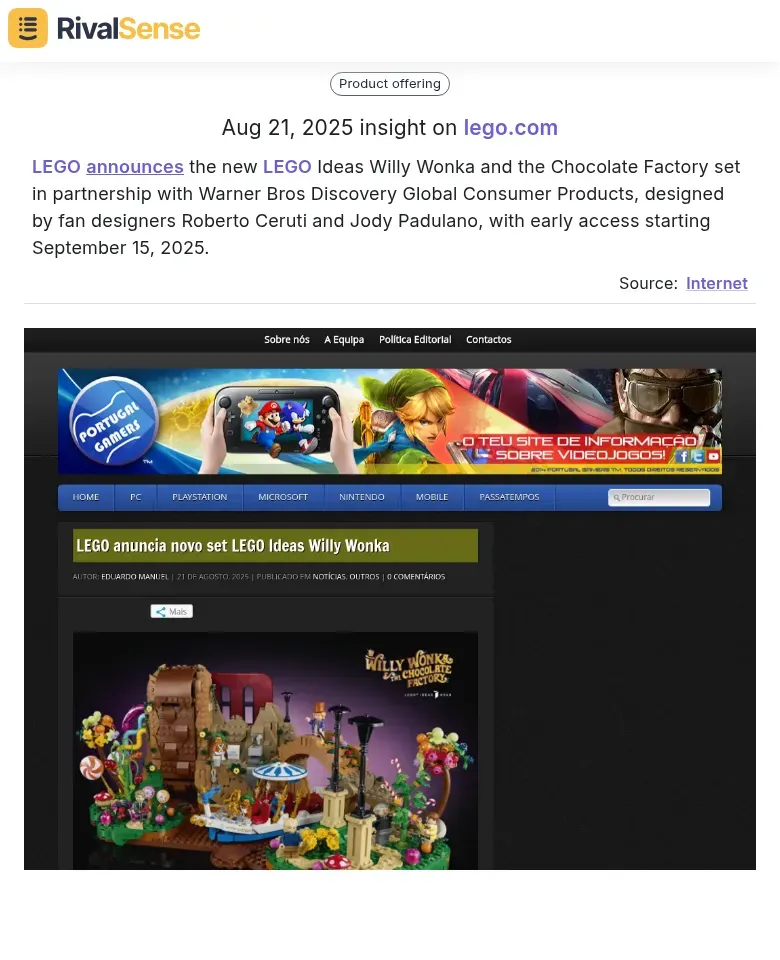Toy Industry CRM Benchmarking: How to Track Key Accounts and Outperform Competitors
In the highly dynamic toy industry, CRM benchmarking isn't just a nice-to-have—it's a strategic imperative for survival and growth. With major retailers like Walmart, Target, and Amazon driving 80% of industry sales, effective key account tracking becomes the lifeblood of toy manufacturers. CRM systems transform transactional relationships into strategic partnerships by providing real-time insights into retailer performance, inventory levels, and promotional effectiveness.
🚀 Practical Tip: Start by benchmarking these 5 key metrics:
- ✅ Account penetration rate (percentage of retailer locations carrying your products)
- ✅ Sell-through velocity (how quickly products move off shelves)
- ✅ Promotional ROI by retailer
- ✅ Service level agreement compliance
- ✅ Customer satisfaction scores from key accounts
By establishing baseline performance metrics, toy companies can identify which retailers deliver the highest lifetime value and allocate resources accordingly. This data-driven approach prevents over-reliance on underperforming accounts while maximizing opportunities with high-potential partners. Remember: In the toy industry, where seasonal fluctuations can make or break annual performance, CRM benchmarking provides the early warning system needed to adapt quickly to market changes.
Key Performance Indicators for Toy Industry CRM Success
Tracking the right KPIs is essential for CRM success in the toy industry. Focus on three core metrics: customer retention rates (aim for 70-75% annually, benchmarked against eCommerce averages), average order value (target $104+ based on 2024 U.S. toy industry benchmarks), and key account sales growth (shoot for 6%+ YoY growth aligning with 2025 industry projections).
Measure account health through engagement scores (track email open rates >25%, website visit frequency), quarterly satisfaction surveys (target NPS scores >50), and renewal rates (aim for 85%+ for subscription models).
📊 Practical steps:
- Implement monthly KPI dashboards comparing your metrics against industry benchmarks
- Set up automated alerts for accounts showing declining engagement scores
- Conduct quarterly business reviews with top accounts using standardized scorecards
- Use CRM segmentation to identify at-risk accounts before churn occurs
- Benchmark against Toy Association reports and Circana industry data for accurate performance gaps
Leveraging Talent Movement for Competitive Intelligence
Talent movement analysis provides powerful competitive intelligence for toy industry leaders. Monitor executive hires and role changes at competitors like Mattel, Hasbro, and LEGO to anticipate strategic shifts. When a major competitor hires a digital transformation executive, expect increased e-commerce investments. Track talent acquisition patterns to identify emerging competitors—recent hiring sprees at educational toy startups signal market expansion.
Example: RivalSense recently tracked that Wayne Daniel joined LEGO as Sr. Director Molding in the United States, previously Director Of Business Development at Canon Virginia, Inc. This type of insight can reveal manufacturing or operational strategy shifts before they become public knowledge.

🎯 Practical steps:
- Set up Google Alerts for competitor executive appointments
- Use LinkedIn Sales Navigator to track talent movement between companies
- Benchmark organizational structures—top performers maintain 1:5 key account manager ratios with dedicated support teams
- Analyze compensation data to ensure competitive offers and identify which roles competitors value most
- Regularly review talent migration patterns to anticipate new market entries and partnership opportunities before they become public knowledge
Monitoring Financial Performance and Market Position
Monitoring financial performance and market position is critical for toy industry CRM benchmarking. Track revenue growth trends using year-over-year (YoY) analysis to assess competitive strength—the toy industry saw a slight 0.4% decline in U.S. sales in H1 2024, but building sets grew 25%, highlighting category opportunities.
Example: RivalSense captured LEGO's strong double-digit growth in the first half of 2025. Tracking such financial performance insights helps benchmark your own growth against market leaders and identify strategic opportunities.

📈 Practical steps:
- Calculate revenue growth rate: (Current Revenue - Previous Revenue) / Previous Revenue × 100
- Monitor revenue retention rate to identify churn risks
- Track revenue per account to benchmark efficiency
- Use CRM analytics for real-time sales data segmentation
- Adjust key account strategies quarterly based on financial KPIs and market share dynamics
Product Launches and Partnership Strategies as Competitive Signals
Product launches and partnership strategies reveal critical competitive intelligence in the toy industry. Monitor collaboration patterns like Cobi's September 2024 Hobbycraft partnership to identify emerging threats from new market entrants. Analyze launch timing—major players strategically release products 6-8 weeks before peak seasons (Q4 holidays, back-to-school) to maximize market impact.
Example: RivalSense tracked LEGO's announcement of the new LEGO Ideas Willy Wonka and the Chocolate Factory set in partnership with Warner Bros Discovery. Monitoring such product launches helps anticipate market trends and competitive positioning.

🎁 Practical steps for competitive analysis:
- Track licensing deals and co-branding initiatives weekly
- Monitor trade show announcements (Toy Fair, Nuremberg) for partnership reveals
- Benchmark your development cycles against industry leaders—LEGO's 18-month innovation cycle vs. fast-follower strategies
- Analyze marketing spend patterns around launches (digital vs. traditional media mix)
- Use CRM data to correlate competitor launches with your customer engagement metrics
Key insight: 32% of toy market revenue now comes from licensed products (Circana 2024). Partnerships with entertainment properties signal expansion into new demographic segments. Watch for patterns where competitors target adult collectors (38.58% market share) through limited editions and premium collaborations.
Implementing Actionable Insights from CRM Benchmarking
Implementing actionable insights from CRM benchmarking requires a systematic approach to transform competitive intelligence into strategic advantage. Start by developing responsive strategies that leverage real-time CRM data to identify competitor pricing shifts, product launches, and customer sentiment changes. Set up automated alerts for immediate notification of market disruptions.
📋 Create dynamic account plans that adapt to real-time changes using these practical steps:
- ✅ Implement whitespace analysis to identify unmet customer needs versus competitor offerings
- ✅ Use relationship mapping to track stakeholder changes and influence patterns
- ✅ Establish competitor stacking matrices to visualize market positioning
- ✅ Set quarterly review cycles instead of annual plans for faster adaptation
Establish continuous improvement processes through a 5-step cycle: Define target metrics, Identify improvement opportunities, Select priority actions, Implement changes, and Evaluate results against benchmarks. Use PDCA (Plan-Do-Check-Act) methodology for iterative refinement.
💡 Key tip: Integrate customer feedback loops directly into your CRM to capture real-time insights and automatically trigger improvement initiatives. Maintain competitive advantage by benchmarking against top performers quarterly and adjusting strategies based on performance gaps.
Ready to Transform Your Competitive Intelligence?
Staying ahead in the toy industry requires more than just tracking your own performance—you need real-time insights into what your competitors are doing. RivalSense automatically tracks competitor product launches, pricing updates, executive movements, partnerships, and financial performance, delivering everything in a comprehensive weekly report.
Try RivalSense for free today and get your first competitor report to start making data-driven decisions that keep you ahead of the competition: https://rivalsense.co/
📚 Read more
👉 Advanced Tactics: Uncover Competitor Product Secrets via Backlink Analysis
👉 Why Tracking Competitor Executive Hires Matters: The Gigi Janelidze Case
👉 How to Do Competitor Target Audience Analysis: A Practical B2B Guide
👉 Risk Management in Key Account Strategy: A Practical Guide
👉 How Adyen Capitalized on Stripe's Blockchain Bet: A Strategic Playbook for B2B Leaders
